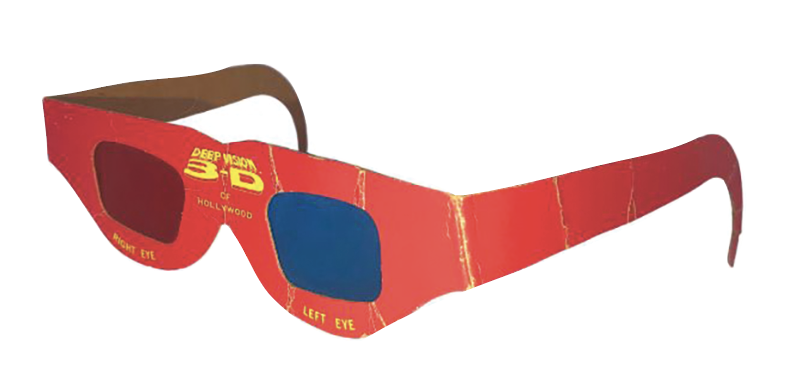
Dorri Partain
Assistant Editor
Red and blue make purple, except for when one eye sees red and the other blue, then the eye is tricked into seeing a three-dimensional (3-D) image.
While normal vision combines height, width, and depth perception, the camera lens can only capture height and width unless a special filming process and pair of glasses with different colored lenses are worn.
Early photography pioneer Louis Ducos du Hauron (1837-1920) experimented with colored filters to create color negatives that when combined created the first color photographs, a process he patented in 1868. Years later, in 1891, by layering a negative tinted blue and one tinted red that slightly overlapped, he was able to create black-and-white three-dimensional images he named anaglyphs.
Anaglyphs were considered mostly a novelty until the technology could be adapted for the film industry, namely Universal Studios’ 1954 release, Creature of the Black Lagoon. The black- and-white production was filmed using polarized light and viewers had to wear glasses with gray polarized lenses to enjoy the effects of the Gill-man reaching out to grab them.
When the film was re-released in the late 1970’s, viewers were issued 3-D Vision of Hollywood glasses to wear- simple cardboard frames with a red and blue (cyan) acetate lens designated right (red) and left (blue). The original film was reformatted using the anaglyph technology so viewers taking off their glasses during the movie would see outlines of blue and red around the images on the screen.
While wearing the glasses, the visual cortex of the brain fuses the red and blue outlines into one image with the perception of depth, or a 3-D image. Once the glasses were removed, movie-goers often complained they continued to see a halo effect that would eventually wear off, so the effect had its drawbacks.
3-D technology continues to be developed in films and video games, including many that don’t require special glasses or equipment to enjoy.



















